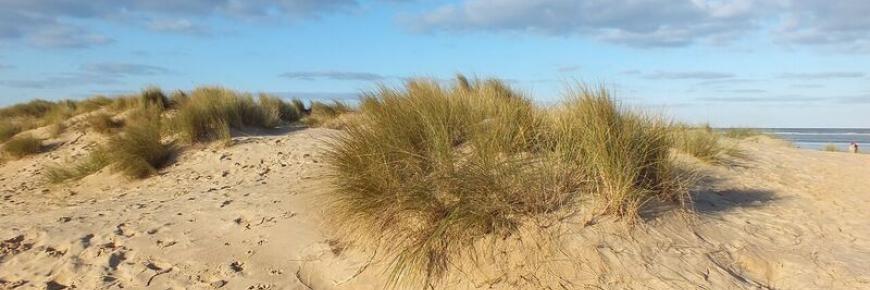Sand net technology
At Authie bay in France, 302 hectares of sand dunes form a natural sea barrier protecting the town of Berck-sur-Mer. With a population of 25k and situated below sea level, Berck needs to rely on dunes to protect the area from flooding. But much like other parts of the 2 Seas area, dune erosion is occurring via storm events and tidal currents. The last severe erosion was in 2011. In prevention of future such events, sand bags have been installed to prevent flooding, but before the start of the ENDURE pilot there was no effort to address dune erosion or improve long-term sustainable resilience for future protection. If dunes are lost through erosion, efforts to halt flooding will have been in vain.
A new tool has been designed to reduce erosion by trapping sand inside layers of netting near the seabed, creating sand deposits which build up the beach and protect and nourish the dunes.
This sand net has not been applied to dunes before and this pilot study used this innovative technology as a cost-effective and durable way of increasing natural dune resilience.
The project has measured the reduction of issues such as erosion and flooding as a result of the pilot in square metres.
The activity was led by CEREMA with close collaboration with CPIE Val d'Authie and their local observer partners.
The following is a presentation given by Nicolas Huybrechts of Cerema to the ENDURE Project Closing Conference in summer 2021, highlighting the pilot results.
Other Supporting documents
- Sand Net Device to Control the Meanders of a Coastal River - The Case of the Authie Estuary, France (Journal)
A summary of all the projects pilots and tools can be found in the Best Practice Guide.

